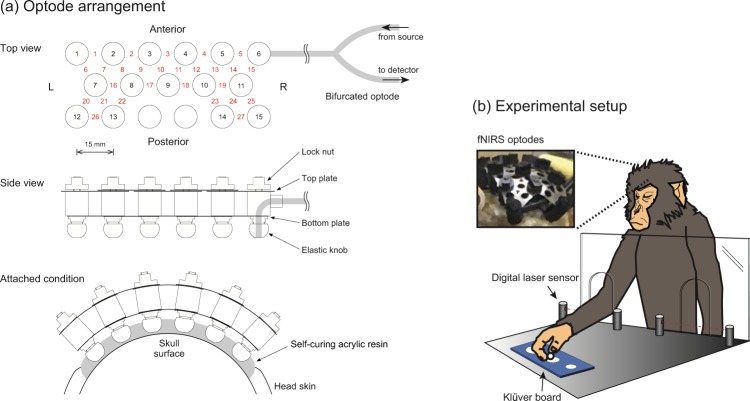Figure 2.
(a) Schematic illustration of the triangular bidirectional optode arrangement and the holding system. In the top view, open circles with black-colored numbers indicate optode positions. Red-colored numbers between optodes indicate channel positions. L, and R represent left side and right side of optode arrangements on the subject’s head, respectively. Adjacent optodes were cross-linked by two-layered linkage plates. The lower plates hold the distances between optodes. The upper plates were equipped with elongated holes and nuts. After the optode tips of globular shape were inset into the sockets on the acrylic resin, the optode arrangement was consolidated by locking nuts. (b) Experimental setup for the macaque’s food retrieval task. The macaque monkey retrieved spherical food pellets (5 mm in diameter) from cylindrical wells (20, 11, and 10 mm in diameter) on a Klüver board. A digital laser sensor was installed in front of the Klüver board to detect the initiation and duration of the reach-to-grasp movement.

